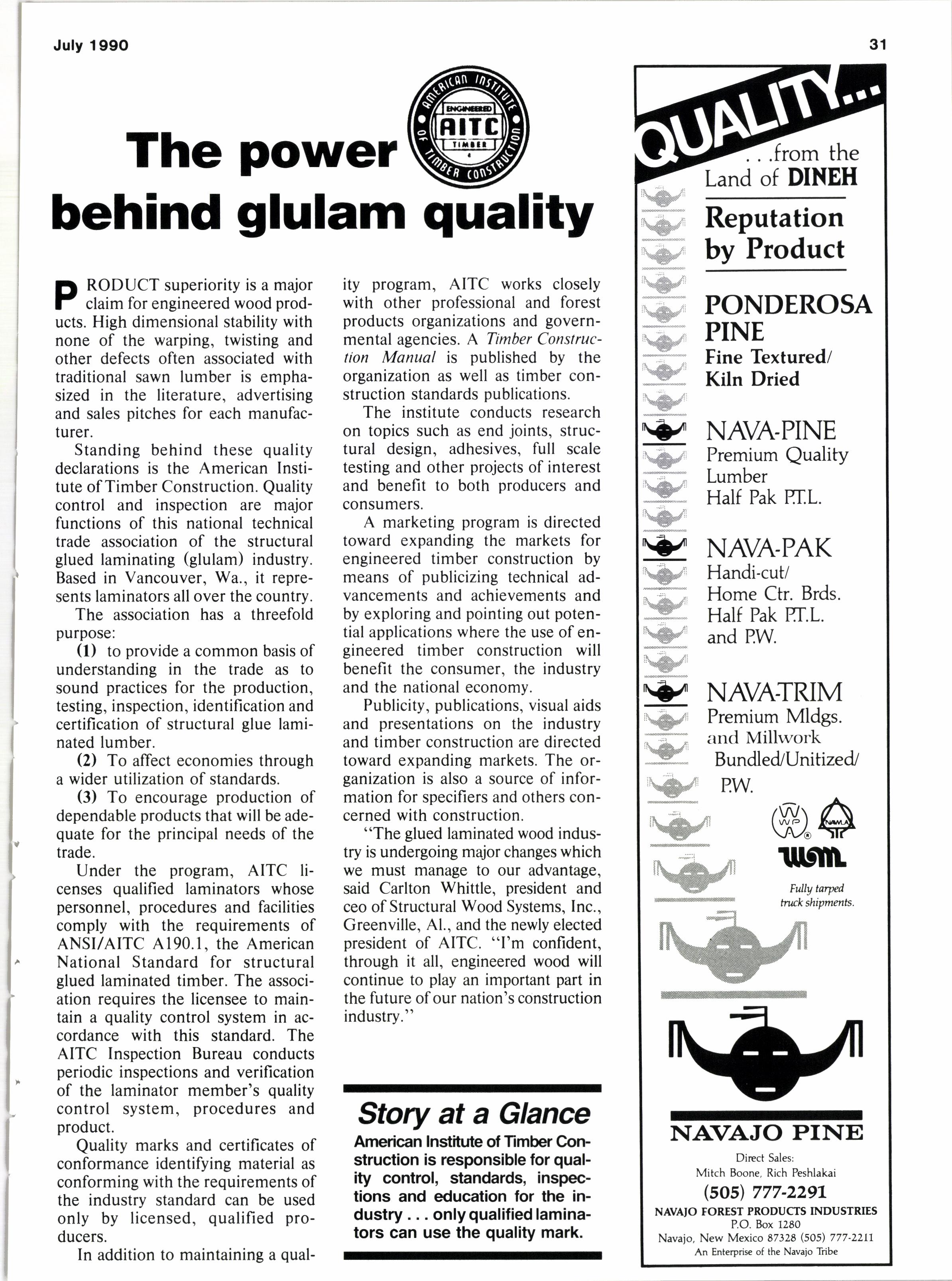
2 minute read
lndustry meets enuironmental challenge with new products
lly Cathy Hernandez Marketing Program Specialist Fibreboard Corp. Roxboro, N.C.
ANY believe the 1990s will be the decade of increased environmental awareness. But, long before the popularity of environmental conservation, there was concern for the environment by an interest group that makes its living off of the land.
This group of foresters, loggers, mill workers, scientists and truckers as well as secretaries, managers and accountants who earn their living in the timber industry continues to be concerned. They seem to have the most to lose if forests are depleted, because they are dependent upon the forests for their livelihood. For this reason, the goal within the industry for years has been sustained vield.
Story at a Glance
New engineered structural framing product outperforms lumber, costs less, works easier. uses hardwood "weed trees" as raw material.
be used to produce products such as particle board, hardboard, medium density fiberboard, oriented strand board and waferboard.
Even the electrical power for cities may come from a co-generation plant fueled by these bi-products. And it shouldn't be surprising that these progressive steps in forest product use have come from within the industry. Motivated by profit, the industry developed a means to cut waste and get the most out of their timber while protecting the land.
Technologies in Roxboro, N.C., they introduced the revolutionary Arrowood product at the National Association of Home Builders Show in Atlanta, Ga., this past January. The response was unbelievably positive with good cause.
Imagine a new structural framing product that is superior to lumber, easier to use and less costly than wood l-joists, laminated veneer lumber, and other engineered framing products. Arrowood cuts, nails, and installs just like sawn lumber.
Twenty-five years ago wigwam burners dotted the landscape burning the shavings, sawdust and bark thrown off as waste from sawmills and plywood plants. Today those wastes are bi-products often making a significant contribution to profits. What was burned as waste can now
Every major forest products company today works hard at developing better products for a growing America. The new products mentioned above are examples of this effort.
Fibreboard Corp. has jumped to the forefront this year with its Arrowood product. Through Fibreboard
Add to this the fact that the product is made from "weed trees" taken from southern hardwood forests which have the ability to rejuvenate naturally faster than the annual cut. Arrowood is both an environmental solution and a product solution.
The $34 million Arrowood plant in Roxboro is really three plants in one. Almost 900/o of the logs entering the plant exit as Arrowood. The higher quality logs are sent to a lathe and peeled for veneer. That veneer is clipped, graded, spliced, and laid up into a 4'wide by 84" long by l-ll 2" thick panel and fed into a press. This process produces a parallel laminated veneer panel that will be cut to the appropriate sizes for the top and bottom cord of Arrowood.
The Arrowood web or center section is produced from oriented strand board. Logs that aren't of veneer grade quality, peeler cores, and low grade veneer are sent to waferizers, These wafers are dried, glued and formed into a 9'x36' mat, then fed into a multi-opening press, to produce a l-l/2" thick OSB panel.

The third line at the Arrowood plant is "lumber assembly." This is the final production stage where the parallel laminated veneer and the oriented strand board come together through a R.F. press to form Arrowood.
The result is a structural framing product that can be cut to 12' through 26' lengths for shipment to distributors throughout the eastern United States. Arrowood is produced in 2"x8", 2"x10", 2"x12", 2"x14" and 2"x16" sizes.
The advantage for the builder is that Arrowood carries comparable loads to other engineered products, but requires no special braces, blocks, stiffeners or hangers. If a builder can use sawn lumber, he can use Arrowood.
Fibreboard is but one example of the forest products industry at work making a better product from a precious natural resource. A natural resource the industry respects and will go to great expense to nurture and protect.










